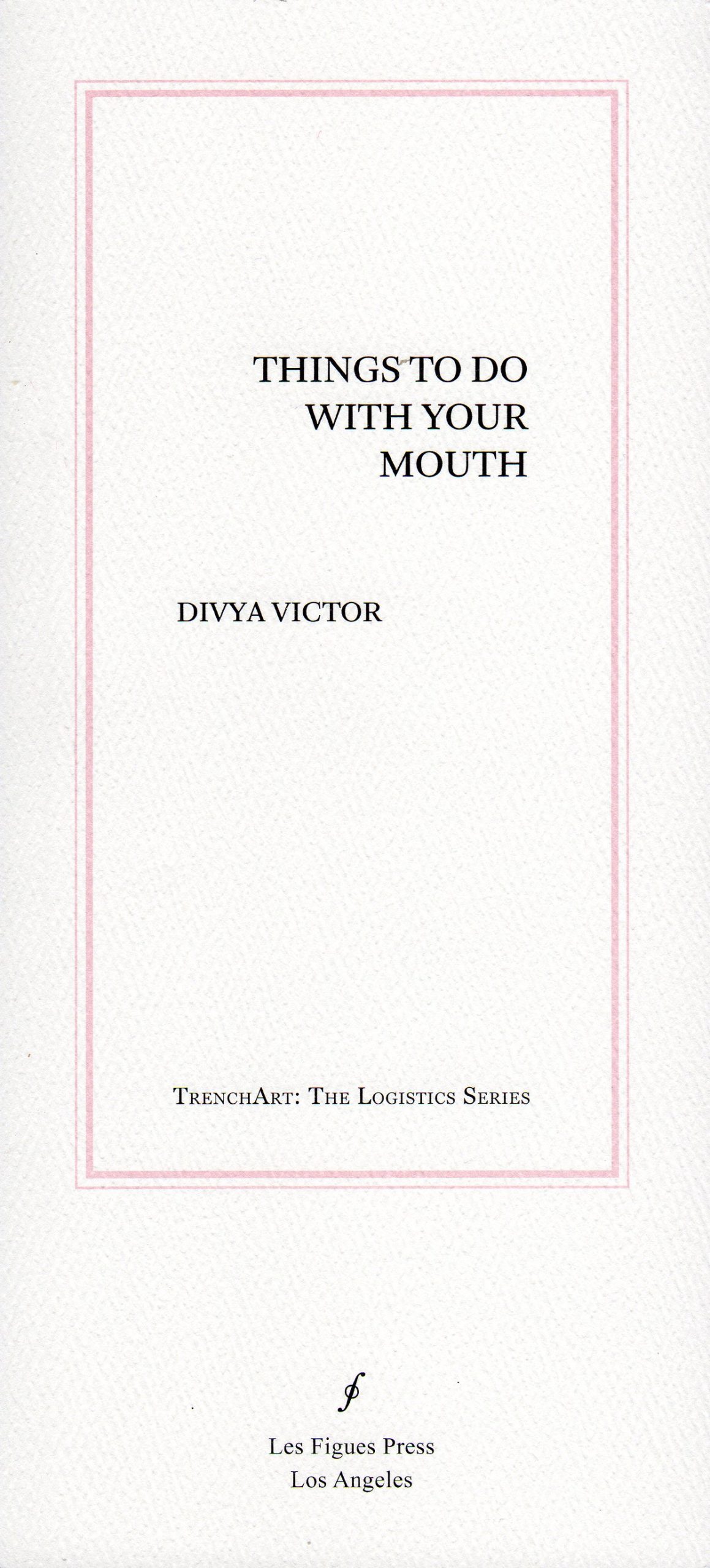Things To Do With Your Mouth
The reader has a lot of work to do after entering Divya Victor’s piece of expression, Things To Do With Your Mouth. The writing is a hybrid of text, speech, and performance. The body, the vocal cords, the mouth. This is about who can speak and be heard and who cannot, about who has power in the system and who does not, and we experience this from the side of those who are not heard and who do not have power in the system. The reader has a lot of work to do after entering Divya Victor’s piece of expression, Things To Do With Your Mouth. The writing is a hybrid of text, speech, and performance. The body, the vocal cords, the mouth. This is about who can speak and be heard and who cannot, about who has power in the system and who does not, and we experience this from the side of those who are not heard and who do not have power in the system. Victor has found the line between the body and language. As an experienced truth of the powerless, at times this is unbearable.
In Part One, “Put Flesh on a String” begins with the institutions of medical clinics and state government under which our bodies and psyches are processed. This is expressed minimalistically as abstracted, kept on file, bureaucratic facts:
1. I am of sound mind,
2. I was born on ______ (date of birth) in ______________ (country of birth)
3. I was married on ______ (dd/mm/yyyy)
On another page, there are institutional observations by way of objective statements of how we measure up: “whether the weight of the object can be held; whether the child weighs as much; whether the body appears limp when carried; whether the child will grip the object when awake.” On another page, the unbearable, how to perform female infanticide: “Place a soaking wet kitchen or hand towel over the face while she sleeps in the crib.” The voice of language, created from above the bureaucratic framework of grooves we reside in, has an outside that does not fit inside the framework and here is where the individual interiorly is in a struggle with the authorized power to oppress. This interiority is expressed by the capacity of language to overflow boundaries in which four small sentences take up eight pages where each word of the sentence is expressed multiply as in “take, lay hold of, get hold of, grasp, grip, clasp, clutch, grab, remove, pull, draw, withdraw, fish, extract. . .” and we are in the field of possibility that language is.
In Part Two, “Gag,” the individual is thwarted by the system to speak. Herein are the hysterics of well-known psychiatric documentation, Dora and Flora. Both, from sexual abuse in childhood, have become trapped in their bodies, their communication reduced to body fluids by trauma:
She [Dora] would lose high amounts of crucial salts, electrolytes, and other nutrients through diarrhea, perform dysentery with blood so as to suggest a trace of an invasion of bowel tissue, vomit feces and half-digested matter that was expelled from the intestines into the stomach up into the esophagus.
. . . Little Flora at peace gagging as if of what had hitherto sustained him nothing was left but an unspeakable anxiety and gagged as if in the wild wind the casement had crashed in and gagged as if to blight his confession and stay his answer. . . gagging as if to fortify me against the increase of alarm I might draw from this disclosure.
Flora traumatized, the abuser at-one with her awareness of herself, and repetitive, non-syntactical placement of gagged/gagging indicate her engulfment. In this story of hysteria is the story: “two nations were in her womb, and two manners of people shall be separated from her bowels, and one people shall be stronger than the other people. . . .” If the cause of trauma is part of the way the system works, those traumatized are left without voice; trauma lives within their bodies voicelessly.
Part Three, “Touching Feeling,” brings in a body connection with each woman writer writing the story of women, “Julia Kristeva spits on my Achilles tendon while my Adam’s apple combs lice from Adrienne Rich’s wigs. . . .” A long list of women writers connected to every conceivable part of the body in nonstop fragments without a period goes on for twelve pages: the body, the voice, the mouth pushing against the system.
Part Four, “Answer,” ends in a swath of violence beginning with “Cutting the vocal chords [sic] can be a joyous moment in a person’s life. Being able to symbolically break the link from the internal world to everyday life.” This could be metaphoric, rhetorical, sarcastic, a choice of a person to not go along with oppression or violence of dominance against the powerless. It is a multidimensional statement pointing at the silence we “are” each second before the possibility of entering the world. The ambiguous meaning of these words expresses a permeable wall between people. . . and this is an accurate naming. Language as porous, mutable, force, energy, space—the permeability of language is an ever-present aspect of this piece of expression, Things To Do With Your Mouth, where we do or do not hold our own in the world . . . the locus of power: the body, the voice, the mouth (in that order).





